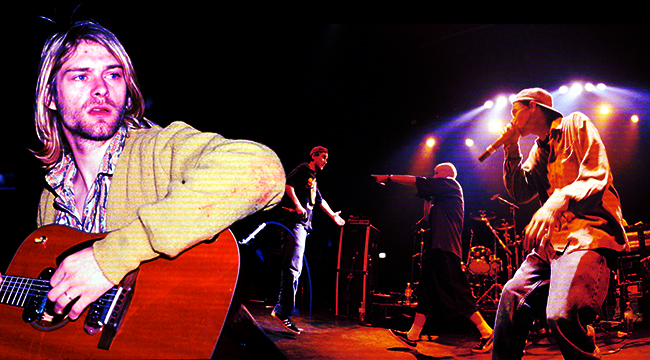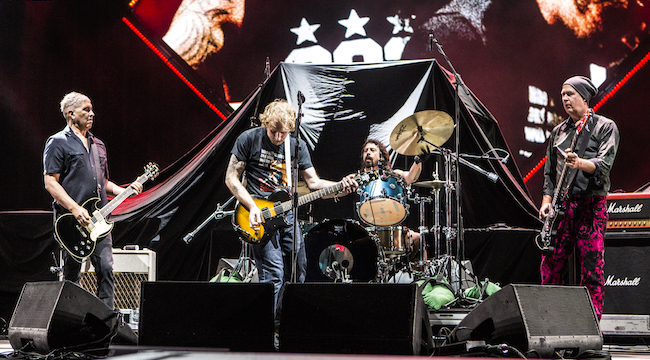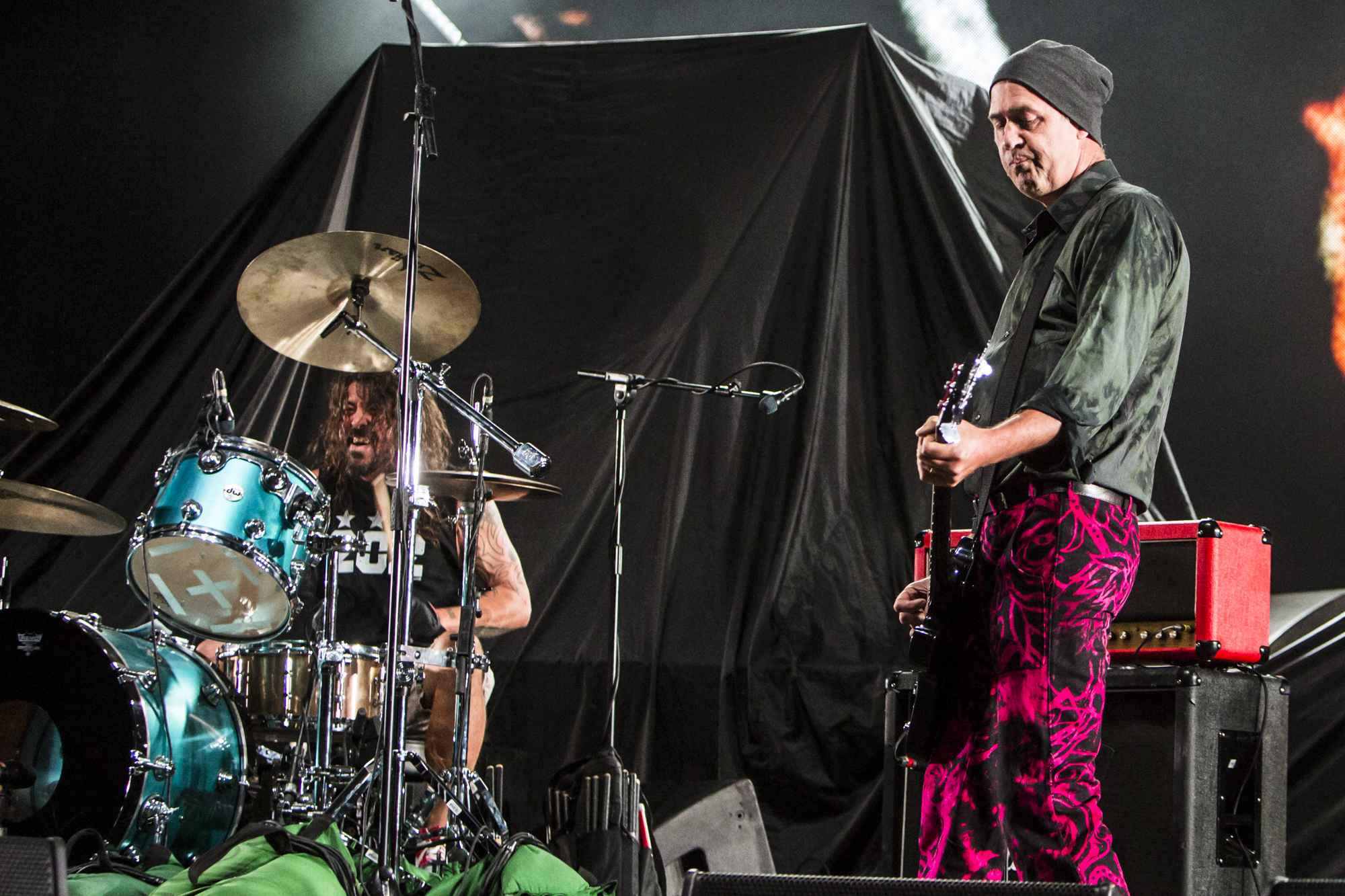
Minnesota college rock legends The Replacements began their reunion slowly. In 2013, the band performed their first sets in 22 years at all three Riot Fests, before playing Coachella in 2014, and ultimately, a full-blown tour in 2015. As someone who saw a couple of the performances, it was everything a fan could hope for, with the band mixing in their hits and their deep cuts for one of the most satisfying runs in recent memory.
At each performance, bandleader Paul Westerberg wore white t-shirts with single letters scrawled across the front and the back, changing with each concert. By the time the tour was concluded, those letters spelled out a sobering message: “I have always loved you. Now I must whore my past.”
A few years later, this idea still stings. While fans enjoyed the rare opportunity to hear these formative songs live, especially those that were too young to see The Replacements in their original state in the 1980s, it was a reminder that there was a reason that the band didn’t tour for those 22 years. And, it was also a reminder of why bands are often forced to return, less out of greed and more out of pure survival.
Of course, many reunions are more nuanced than just the desire, or need, for money. Whether it was Pavement’s mighty 2010 return that seemed like an act of pure generosity from bandleader Stephen Malkmus that went against every fiber of his being or the quick reboot of LCD Soundsystem that found the group regretting ever calling it quits in the first place, there are elements like crowd-pleasing or even new creative endeavors at play. There is no black or white, wrong or right way to do things, with reunions ultimately bound to upset some people along the way. But still, there remain a few beloved entities that seem like they “get it” a little better than others.

On Saturday night at Cal Jam, one of the most feverishly desired but deeply complicated reunions in popular music occurred in perhaps the only way it could. Nirvana, a band that ended in 1994 with the death of songwriter Kurt Cobain, found their members coming together for a rare performance of Nirvana songs. It wasn’t the first time that this had happened — the band famously performed as the same incarnation around its Rock And Roll Hall Of Fame induction in 2014, had played backing band to Paul McCartney, and have been known to jam on non-Nirvana tunes when its members happened to be in the same place at the same time — but it was the first time that rumors circulated ahead of time that it could occur and that a massive, ticket-buying audience would get to witness it.
Leading up to the performance, it was hard to know exactly how it would feel to hear these songs live, in person, for the first time ever. And, unless you were in the audience and were old enough to have seen Nirvana during their brief existence, you probably felt the same. But when the moment finally came, following a Foo Fighters set that appropriately used a reverse chronological order setlist so that the Nirvana section occurred right where it should, the goosebumps among the tens of thousands of fans were virtually palpable as behind-the-scenes footage of Dave Grohl, Krist Novoselic, and Pat Smear appeared on the stage’s giant screens.
When it came to the performance, two vocalists stepped into Kurt’s impossibly huge shoes. First was Deer Tick’s John McCauley, a man that has performed as a Nirvana cover band before (Deervana) and is notable for his gruff wail that is often the spitting image of Cobain’s own gravely cries. “Serve The Servants” was a little rough but felt like a warmup for “Scentless Apprentice” and “In Bloom,” and the loose and fun performance felt like it really did capture the spirit of the songs. The other vocalis, Joan Jett, had a bit of a tougher time as her voice less resembles Cobain’s, but during the evening’s closing song of “All Apologies,” her version generated the most stunning moment of the night, where Grohl’s harmonizing vocals captured the inherent sorrow that comes with these tunes: “All in all is all we are.”

Nirvana’s members would never dare bill themselves as Nirvana without Kurt, nor is it likely they’d ever tour this kind of concept as a money-making enterprise. Grohl’s success with the Foo Fighters is already mammoth and Novoselic has crafted his own fulfilling post-Nirvana life where he gets to pursue his passions with as much or as little spotlight as he wants. These moments where Nirvana songs ring out to audiences, performed by the living members of the band, come across as a pure gift to the fans, holding onto the reverence the songs deserve without relegating them to a permanent retired status. And if the choice was between never playing the songs again or turning them into something that would cast a shadow on the legacy of Cobain or Nirvana, there is no doubt that the band members would rather permanently shelve the tunes rather than spoil the vision of their creator.
There aren’t many other acts faced with this same sort of decision that opt for the same kind of tightrope walk. The Smiths will likely never reunite, but their songs are still played regularly by both Morrissey and Johnny Marr. The same goes for the members of Led Zeppelin and Pink Floyd and The Beatles, where the opportunity to hear the band’s original hits are regularly offered in the solo endeavors of its creators. It’s a good thing that these songs are still played for their fans to hear, but it comes at the expense of mystique, knowing that the surviving members of these projects aren’t even joining forces to give fans the closest thing possible to how the songs were originally conceived.
Another example of this are New York hip-hop luminaries the Beastie Boys, who have operated in a completely different manner since the death of a core part of their trio, Adam Yauch, in 2012. Following Yauch’s death, the remaining two members admitted that they’d never perform as the Beastie Boys again, though they left open the possibility of other joint musical endeavors. But in doing so, they didn’t retire the Beastie Boys’ legacy. Starting later this month, they will embark on a book tour that will serve as a celebration of all things Beastie, giving fans a chance to gather and appreciate one of the most influential artists of all time, without stooping to try to recreate the Beastie Boys music or on-stage persona without Yauch.
It’s not to say there is a better or worse way for musicians to manage the deaths of their collaborators or falling outs with bandmates. Every single band has its own story, its own set of circumstances, its own way to navigate issues of financial stability, musical legacy, and fan service. But situations like the Beastie Boys and Nirvana feel like they best understand the tenor of their existence, where the decisions that are made aren’t just coming from business partners, but from dear friends of their fallen mates.
With Nirvana in particular, to have this performance take place at a festival put on by Grohl, that featured Novoselic performing, and that provided a beacon for the rock pastiche that Nirvana is largely responsible for oozed reverence. Novoselic and Grohl and Smear even appeared to be having fun playing their old songs, aware that the meaning they hold for the band might be totally different than what they hold for the audience. No one wants to wind up like Westerberg, scrawling an explanation and apology full of regrets across their shirts while performing decades-old songs. Care and respect are all that can be hoped for in the reunions that just aren’t possible, and the former members of Nirvana and the Beastie Boys seem to get that better than anyone else.






